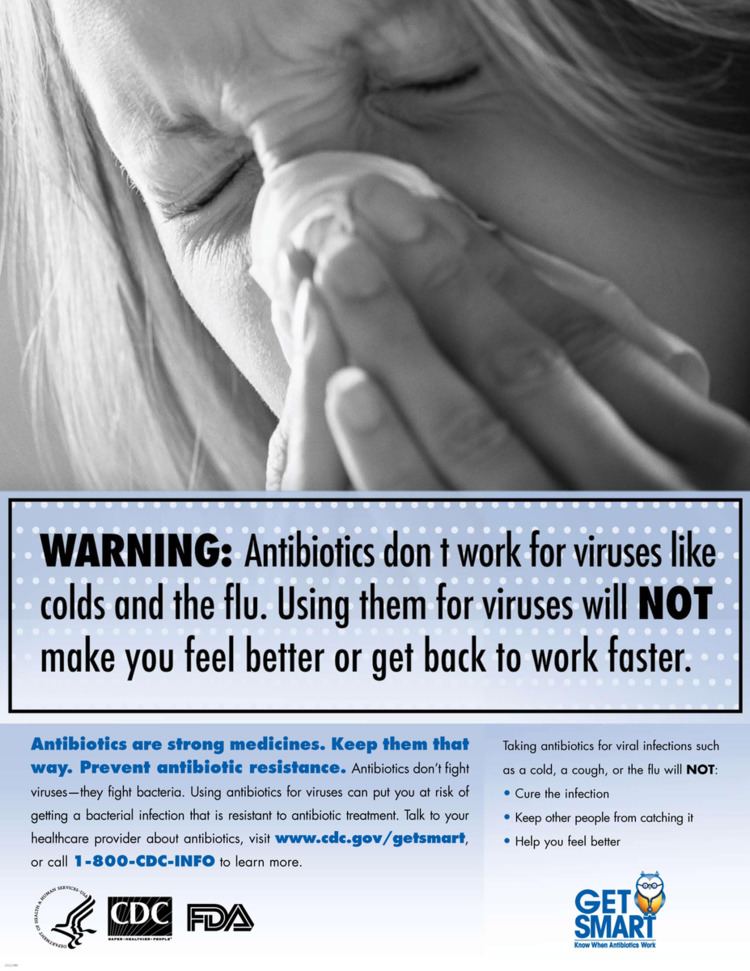 | ||
Antibiotic misuse, sometimes called antibiotic abuse or antibiotic overuse, refers to the misuse or overuse of antibiotics, with potentially serious effects on health. It is a contributing factor to the development of antibiotic resistance, including the creation of multidrug-resistant bacteria, informally called "super bugs": relatively harmless bacteria can develop resistance to multiple antibiotics and cause life-threatening infections.
Contents
Instances of antibiotic misuse
Common situations in which antibiotics are overused include the following:
Social and economic impact
Antibiotics can cause severe reactions and add significantly to the cost of care. In the United States, antibiotics and anti-infectives are the leading cause of adverse effect from drugs. In a study of 32 States in 2011, antibiotics and anti-infectives accounted for nearly 24 percent of ADEs that were present on admission, and 28 percent of those that occurred during a hospital stay.
Prescribing by an infectious disease specialist compared with prescribing by a non-infectious disease specialist decreases antibiotic consumption and reduces costs.
Antibiotic resistance
Though antibiotics are required to treat severe bacterial infections, misuse has contributed to a rise in bacterial resistance. The overuse of fluoroquinolone and other antibiotics fuels antibiotic resistance in bacteria, which can inhibit the treatment antibiotic-resistant infections. Their excessive use in children with otitis media has given rise to a breed of bacteria resistant to antibiotics entirely.
Widespread use of fluoroquinolones as a first-line antibiotic has led to decreased antibiotic sensitivity, with negative implications for serious bacterial infections such as those associated with cystic fibrosis, where quinolones are among the few viable antibiotics.
Inappropriate use
Antibiotics have no effect on viral infections such as the common cold. They are also ineffective against sore throats, which are usually viral and self-resolving. Most cases of bronchitis (90–95%) are viral as well, passing after a few weeks—the use of antibiotics against bronchitis is superfluous and can put the patient at risk of suffering adverse reactions.
Official guidelines by the American Heart Association for dental antibiotic prophylaxis call for the administration of antibiotics to prevent infective endocarditis. Though the current (2007) guidelines dictate more restricted antibiotic use, many dentists and dental patients follow the 1997 guidelines instead, leading to overuse of antibiotics.
Antibiotics in livestock
There has been massive use of antibiotics in animal husbandry. The most abundant use of antimicrobials worldwide are in livestock; they are typically distributed in animal feed or water for purposes such as disease prevention and growth. Debates have arisen surrounding the extent of the impact of these antibiotics, particularly antimicrobial growth promoters, on human antibiotic resistance. Although some sources believe that there remains a lack of knowledge on which antibiotic use generates the most risk to humans, policies and regulations have been placed to limit any harmful effects.
